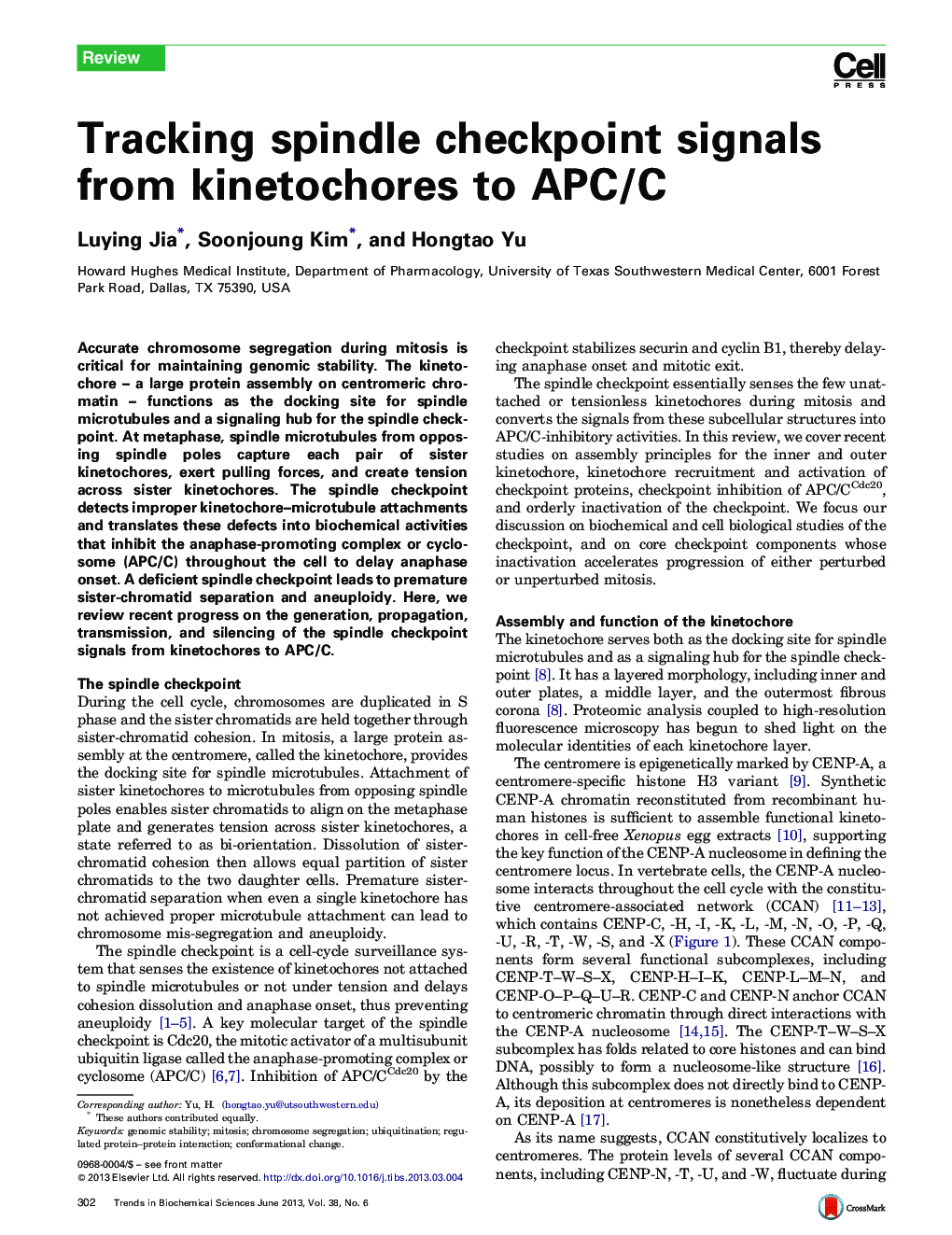| Article ID | Journal | Published Year | Pages | File Type |
|---|---|---|---|---|
| 2031650 | Trends in Biochemical Sciences | 2013 | 10 Pages |
•The spindle checkpoint detects unattached or tensionless kinetochores during mitosis and delays anaphase onset to ensure the fidelity of chromosome segregation.•Recent progress on the molecular understanding of the spindle checkpoint is reviewed.•The prominent roles of regulated protein–protein interactions and ubiquitin-dependent proteolysis in checkpoint signaling are highlighted.•The contributions of structural biology to the current understanding and future dissection of the spindle checkpoint are emphasized.
Accurate chromosome segregation during mitosis is critical for maintaining genomic stability. The kinetochore – a large protein assembly on centromeric chromatin – functions as the docking site for spindle microtubules and a signaling hub for the spindle checkpoint. At metaphase, spindle microtubules from opposing spindle poles capture each pair of sister kinetochores, exert pulling forces, and create tension across sister kinetochores. The spindle checkpoint detects improper kinetochore–microtubule attachments and translates these defects into biochemical activities that inhibit the anaphase-promoting complex or cyclosome (APC/C) throughout the cell to delay anaphase onset. A deficient spindle checkpoint leads to premature sister-chromatid separation and aneuploidy. Here, we review recent progress on the generation, propagation, transmission, and silencing of the spindle checkpoint signals from kinetochores to APC/C.
